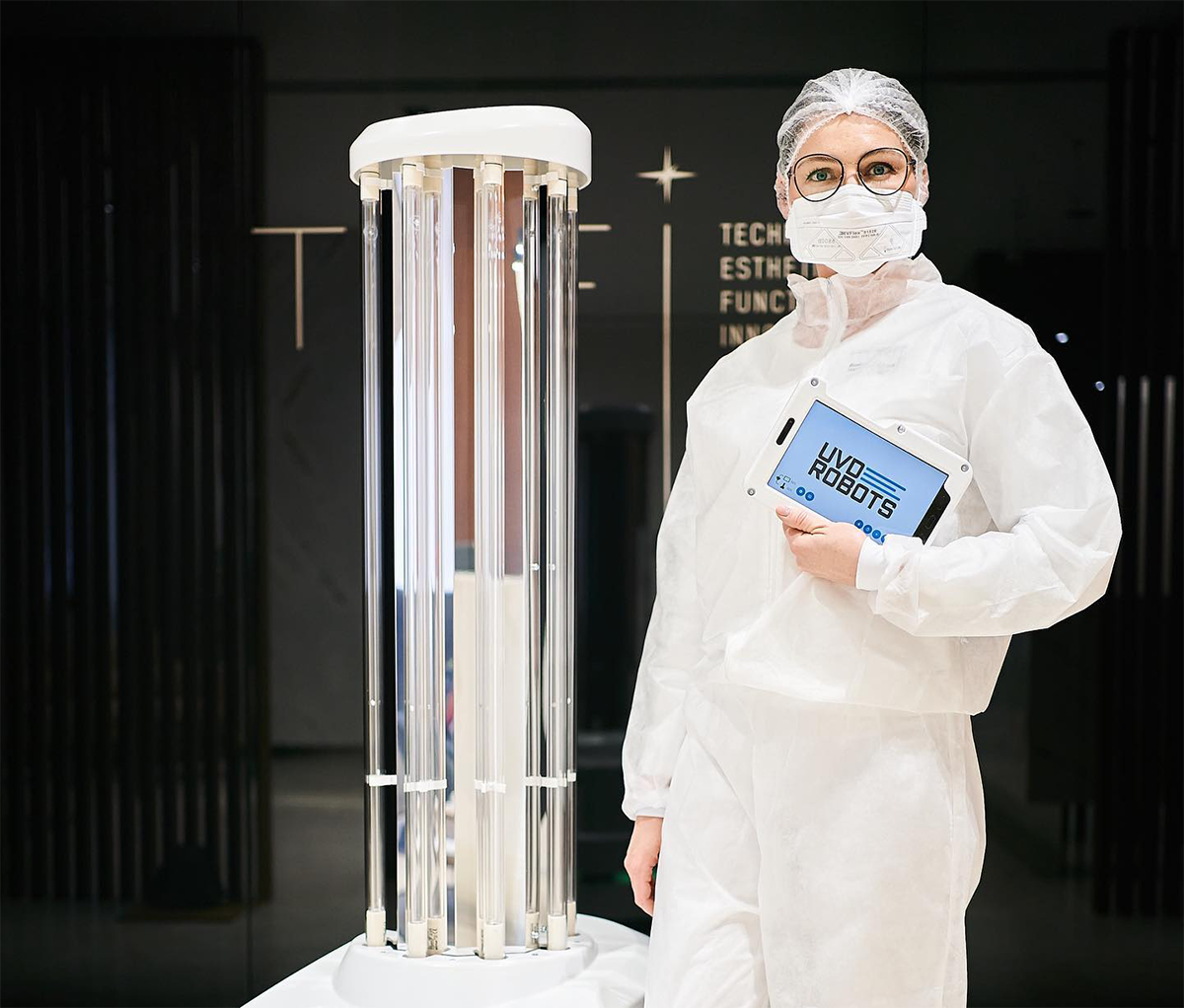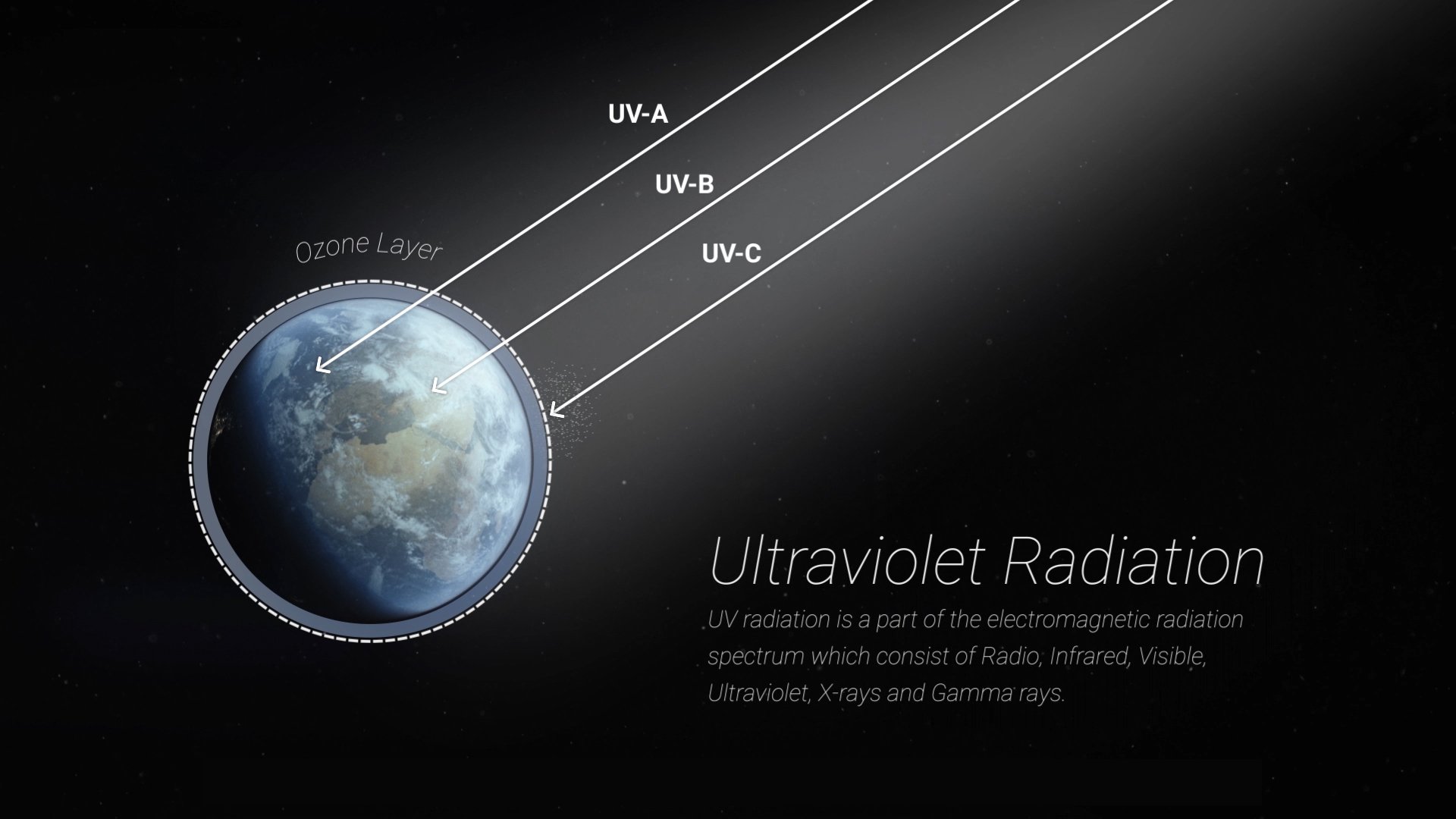Title
Content
Title
Content

“What is UV-C light and how does it work?” We'd like to show you! The complex science is simple once you understand light.
As you can see in the image below, the sun emits radiation across the electromagnetic spectrum1. Earth’s atmosphere filters sunlight; and though long-wave (UV-A)/middle-wave (UV-B) ultraviolet light reaches the surface of the planet, short-wave (UV-C) ultraviolet light gets absorbed.

UV-C light waves are composed of photons, or particles of light. They are the most energetic of the optical electromagnetic spectrum (composed of UV, visible, and infrared light) and are, therefore, the most photochemically active.2 The peak germicidal effects of UV-C irradiation occur at wavelengths of 260-265 nm. UV-C light generated by low vapor pressure mercury lamps exhibit peak germicidal efficacy at 254 nm.3
UV-C photons cause irreversible damage to the DNA and RNA of many microorganisms. When UV-C light is applied to an area, it is absorbed into the DNA/RNA of the microorganism disrupting the replication process and preventing growth and multiplication. As bacteria die off there will not be new ones to continue the cycle.
So what does this mean on a practical level? Well, that using UV-C light will inactivate microorganisms stopping the replication cycle and ensuring higher levels of disinfection.
UVD Robots
UVD Robots provide fully automated disinfection solutions with predictable, and cost effective outcomes in various facilities The autonomous UVD Robots present a groundbreaking solution to the challenges posed by shadows and distances. By leveraging advanced technology, The UVD Robot ensure the thorough irradiation of surfaces in a given area without the need for manual intervention. UVD Robots have been designed with feedback from specialists involved in cleaning and disinfection procedures with UV light. Our autonomous robot has several cutting-edge features that bring UV-C light disinfection to a higher level.
UVD Robots are easy to integrate with existing standard operating procedures and workflows for seamless workflow integration. The intuitive user interface and state of the art technology make installations and training easy, and will have your facility up and running in just a few hours.
Click the button to book a demo of the UVD Robot, and learn how our UVD Robots are using UV-C light to eliminate more than 99.99% of selected microorganisms in the environment by disinfecting with UV-C light.